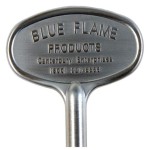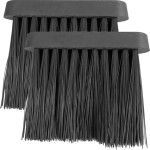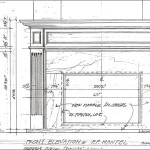Electric Fireplace Power Requirements: A Comprehensive Guide
Electric fireplaces offer a convenient and aesthetically pleasing alternative to traditional wood-burning fireplaces. They require no chimney, produce no smoke, and are generally easier to install and maintain. However, understanding the power requirements of an electric fireplace is crucial before purchasing and installing one. This article provides a detailed overview of the power needs of these appliances, covering various factors that influence their energy consumption and offering guidance on how to determine the appropriate electrical setup.
The power consumption of an electric fireplace is typically measured in watts (W) or kilowatts (kW). One kilowatt is equal to 1000 watts. Electric fireplaces primarily use electricity to power their heating element and their visual effects, such as the simulated flame display. The heating element is responsible for generating heat, while the visual effects contribute to the overall ambiance and realism of the fireplace. The wattage rating of an electric fireplace directly correlates to its heating capacity. Higher wattage models generally provide greater heat output, making them suitable for larger rooms.
It is essential to understand that the power requirements can vary significantly between different models and types of electric fireplaces. Factors such as size, heating capacity, supplemental features, and the specific technology employed in the flame simulation all contribute to the overall power consumption. Understanding these variables is essential for selecting the right model and ensuring that your electrical system can safely and efficiently support its operation.
Understanding Wattage and Voltage
Wattage is the measure of electrical power used by the electric fireplace. It directly affects the amount of heat produced. A higher wattage generally translates to a greater heating capacity, making the unit suitable for larger rooms or colder climates. However, higher wattage also means increased electricity consumption and potentially higher energy bills. It's imperative to carefully consider the size and insulation of the space where the electric fireplace will be used to select a model with appropriate heating power.
Voltage, on the other hand, represents the electrical potential difference required to power the appliance. In North America, the standard voltage for residential outlets is typically 120 volts. However, some larger electric fireplaces, particularly those designed to heat larger areas, may require a 240-volt circuit. Using an electric fireplace with the incorrect voltage can result in damage to the appliance or even a fire hazard. Always verify the voltage requirements of the specific model and ensure that your electrical system is compatible.
Electric fireplaces designed for 120-volt outlets typically range in wattage from 1000 to 1500 watts. This allows them to be plugged into a standard household outlet without overloading the circuit. 240-volt models, often used for larger built-in units, can range from 2000 to 5000 watts or even higher. These require a dedicated circuit breaker and professional installation to ensure safe operation.
To determine the amperage required by an electric fireplace, you can use the following formula: Amps = Watts / Volts. For example, a 1500-watt electric fireplace operating on a 120-volt circuit would require 12.5 amps. It's crucial to ensure that the circuit breaker supplying the outlet has a higher amperage rating than the calculated value to prevent overloading the circuit and tripping the breaker. A 15-amp or 20-amp circuit breaker is typically sufficient for a 120-volt electric fireplace, while a 30-amp or 40-amp breaker may be required for a 240-volt model.
Factors Influencing Power Consumption
Several factors contribute to the power consumption of an electric fireplace. These factors should be considered when selecting a model and estimating your energy costs.
Heating Capacity: The primary function of an electric fireplace is to provide heat. Consequently, the heating element is the most significant consumer of electricity. Electric fireplaces typically have multiple heat settings, allowing users to adjust the heat output to their preference. Higher heat settings draw more power than lower settings. Some models also incorporate a thermostat, which automatically regulates the heat output to maintain a consistent temperature. Using the thermostat effectively can help optimize energy consumption and prevent overheating.
Flame Simulation Technology: Modern electric fireplaces feature sophisticated flame simulation technology that creates a realistic visual effect. These systems often use LED lights and rotating reflectors to mimic the appearance of real flames. While the power consumption of the flame simulation system is relatively low compared to the heating element, it still contributes to the overall energy usage. Some models offer adjustable flame brightness and speed settings, allowing users to customize the visual effect while potentially reducing power consumption.
Supplemental Features: Many electric fireplaces come equipped with supplemental features such as remote controls, timers, and built-in speakers. These features add to the convenience and functionality of the appliance but also contribute to its power consumption. The energy used by these features is usually minimal compared to the heating element, but it's still worth considering when evaluating the total power needs of the electric fireplace.
Efficiency: The efficiency of an electric fireplace refers to its ability to convert electrical energy into heat. While electric fireplaces are generally considered to be 100% efficient in converting electricity to heat (as opposed to wood-burning fireplaces where some heat escapes through the chimney), variations in design and components can affect the overall energy consumption. Look for models with features like a thermostat and adjustable heat settings to optimize energy usage. Energy-efficient models may also use advanced heating technologies or insulated designs to minimize heat loss.
Determining the Appropriate Electrical Setup
Before installing an electric fireplace, it is essential to ensure that your electrical system can safely and adequately support its power requirements. Overloading a circuit can lead to tripped breakers, damaged wiring, and even fire hazards. Following these steps will help you determine the appropriate electrical setup:
Check the Wattage and Voltage: The first step is to identify the wattage and voltage requirements of the electric fireplace. This information is typically found on the product label, in the user manual, or on the manufacturer's website. Note the voltage requirement carefully, as some larger models may require a 240-volt circuit instead of the standard 120-volt outlet.
Assess Your Existing Electrical System: Next, assess the capacity of your existing electrical circuits. Locate the circuit breaker that will supply power to the electric fireplace. Check the amperage rating of the breaker. As a general rule, you should not load a circuit to more than 80% of its capacity. For example, a 15-amp circuit should not be loaded with more than 12 amps (15 amps x 0.8 = 12 amps). Also, consider what other appliances are already connected to the circuit. Adding an electric fireplace to a heavily loaded circuit can easily cause the breaker to trip.
Calculate the Amperage: Use the formula Amps = Watts / Volts to calculate the amperage required by the electric fireplace. Compare this value to the available amperage on the circuit. If the amperage required by the electric fireplace exceeds the available capacity, you will need to either choose a lower-wattage model or install a dedicated circuit.
Consider a Dedicated Circuit: For larger electric fireplaces, particularly those requiring 240 volts, it is generally recommended to install a dedicated circuit. This will ensure that the appliance has sufficient power without interfering with the operation of other devices on the same circuit. Installing a dedicated circuit typically requires the services of a qualified electrician.
Use a Surge Protector: While electric fireplaces are relatively durable appliances, they can still be susceptible to damage from power surges. It is always a good idea to plug your electric fireplace into a surge protector to protect it from voltage spikes and other electrical irregularities. A surge protector can help extend the lifespan of your electric fireplace and prevent costly repairs.
By carefully considering these factors and taking the necessary precautions, you can ensure that your electric fireplace operates safely and efficiently. Improper electrical installation can pose significant risks, so it's always best to consult with a qualified electrician if you have any doubts or concerns.

Are Electric Fireplaces Energy Efficient Direct Learning Center

Electric Fireplace Energy Efficiency Results Most Efficient Wattage Btu For 117 Models

4 Things Needed For An Electric Fireplace And Not

Are Electric Fireplaces Energy Efficient Direct Learning Center

Are Electric Fireplaces Energy Efficient Direct Learning Center

What Are The Electrical Requirements For An Electric Fireplace Stylish Fireplaces

Electric Fireplace Faq Sylvane

1400w Electric Stove Heater With 3 Level Flame Effect And Sided View Costway

How To Install An Electric Fireplace Diy Family Handyman

Garage Heater Can I Use Fireplace As








